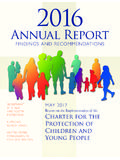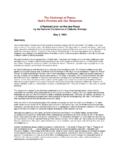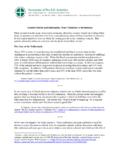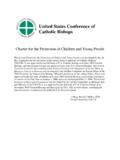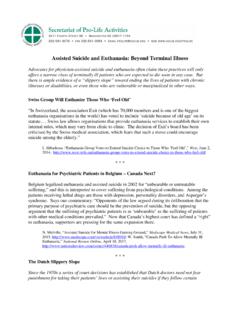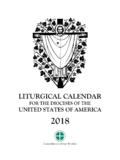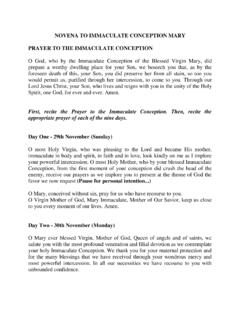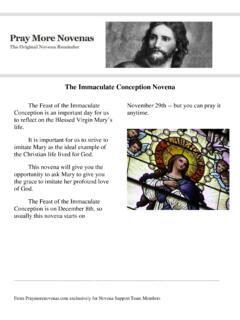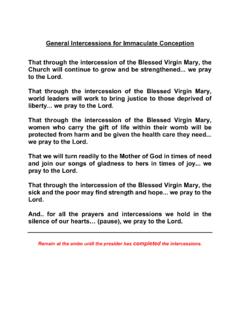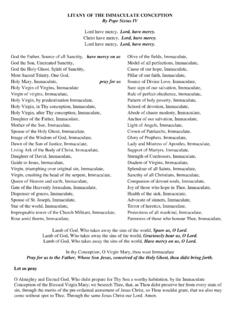Transcription of Mary’s Immaculate Conception - USCCB
1 Mary s Immaculate ConceptionOn December 8, we celebrate the Solemnity of the Immaculate Conception of the Blessed Virgin Mary, which references Mary s Conception in her mother s womb without the stain of Original Sin: An essential part of God s plan for the mother of his Son was that she be conceived free from Original Sin. Through the centuries the Church became ever more aware that Mary, full of grace through God, was redeemed from the moment of her Conception (CCC, no. 491).In anticipation that she was to bear the Son of God, Mary was preserved from the time of her Conception from Original Sin. We call this the Immaculate Conception . No sin would touch her, so that she would be a fitting and worthy vessel of the Son of God.
2 The Immaculate Conception does not refer to the virginal Conception and birth of Christ, but rather to Mary s being conceived without inheriting Original Sin. In the course of time, the doctrine of the Immaculate Conception became more pre-cisely enunciated, as its truth long supported by the universal popular devotion of the faithful was better understood by deepen-ing theological inquiry. In 1854, Pope Pius IX proclaimed this dogma infallibly: that is, in his role as supreme teacher of the Church, he declared that this doctrine is divinely revealed and must be accepted with faith by the entire Church. (United States Catholic Catechism for Adults, 142-143)Even before this tenet of the faith was formally declared, a long tradition of faith that held this belief that Mary was conceived without sin: This feast was celebrated in some monasteries before the beginning of the eighth century and became widespread in the eighteenth century.
3 In the United States, celebration of this observance predates the Declaration of Independence. The bishops commended the nation to the patronage of Mary under the title of the Immaculate Conception in 1846. It became a nationwide holy day in 1885. (Essential Guide to Seasons and Saints, 120)Copyright 2015, United States Conference of Catholic Bishops, Washington DC. All rights reserved. Image: Immaculate Conception , Placido Costanzi, The J. Paul Getty from the United States Catholic Catechism for Adults, copyright 2006, United States Conference of Catholic Bishops. All rights from the Essential Guide to Seasons and Saints, copyright 2013, United States Conference of Catholic Bishops, Washington DC.
4 All rights reserved.
